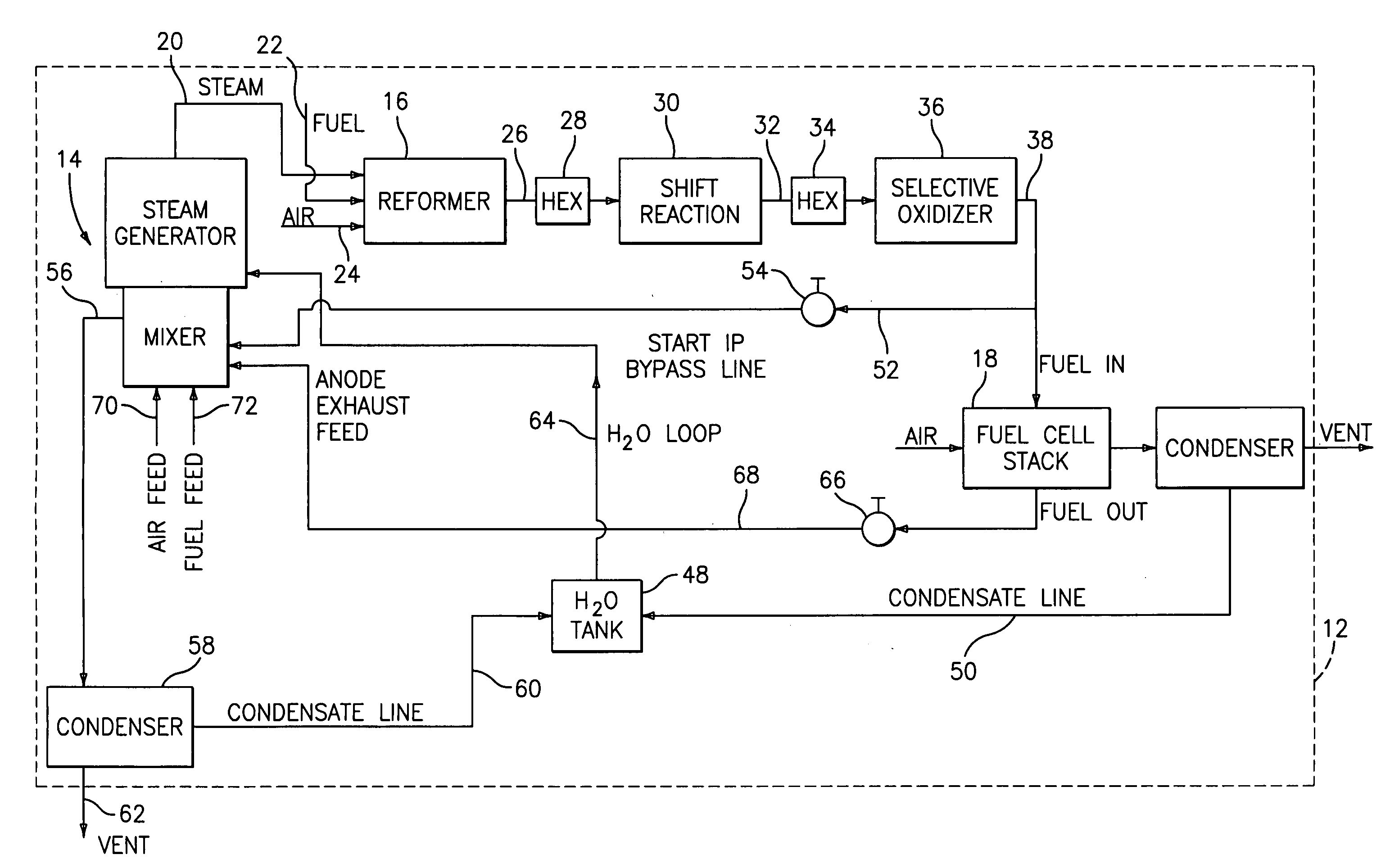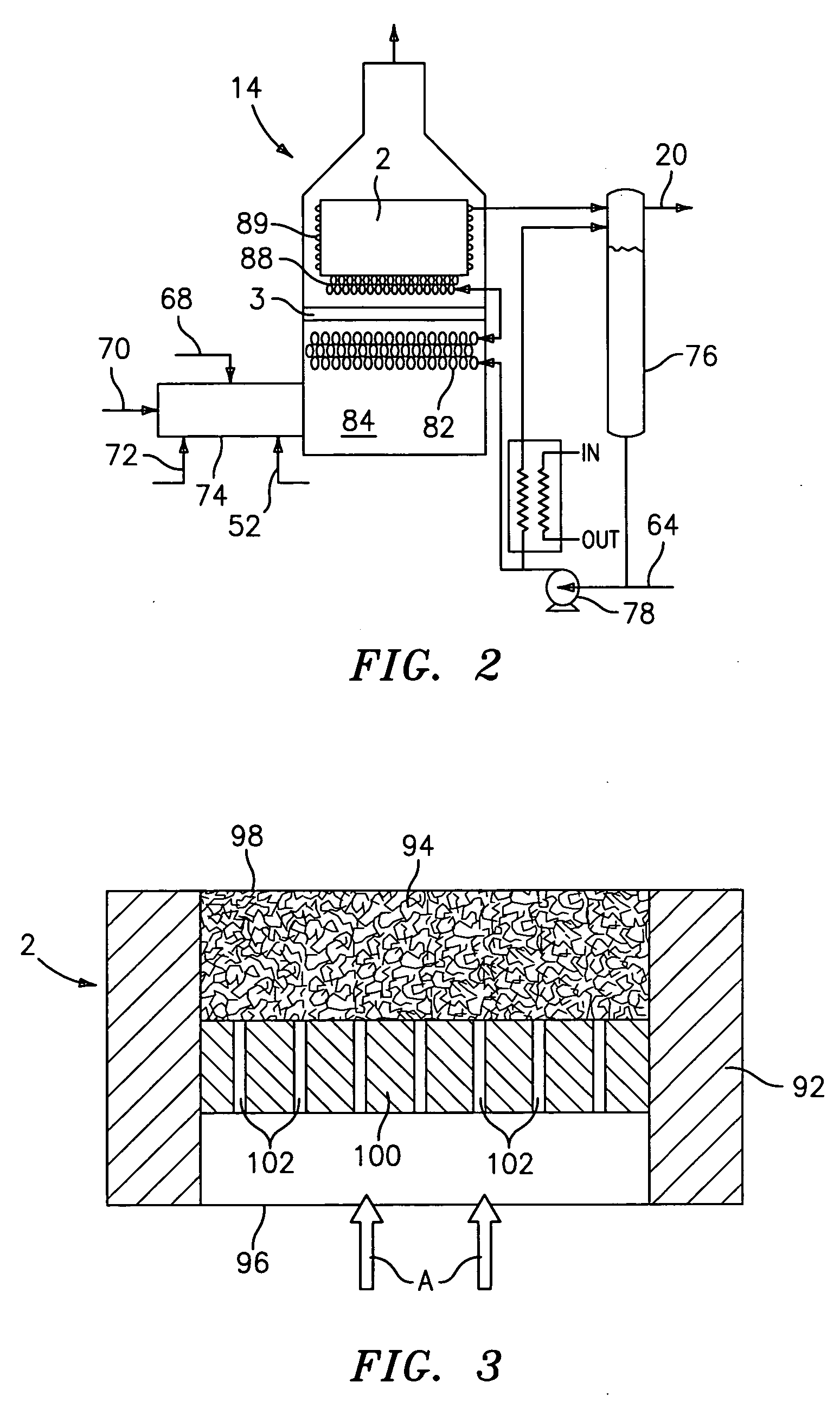Burner for combusting the anode exhaust gas stream in a PEM fuel cell power plant
a fuel cell power plant and anode exhaust gas technology, which is applied in the direction of combustion using catalytic materials, combustion types, lighting and heating apparatus, etc., can solve the problems of high flow requirement, inability to utilize the anode exhaust gas stream, and inability to achieve conventional burner capability
- Summary
- Abstract
- Description
- Claims
- Application Information
AI Technical Summary
Benefits of technology
Problems solved by technology
Method used
Image
Examples
Embodiment Construction
[0004] This invention relates to a burner which is operative to combust the anode exhaust stream of a PEM fuel cell power plant to provide energy for operation of the power plant.
[0005] A PEM fuel cell power plant is a low temperature power plant, and operates at a temperature in the range of about 100° F. (38° C.) to about 200° F. (93.3° C.), and preferably at about 180° F. (82.2° C.), and preferably at essentially ambient pressures. For PEM fuel cells using any form of steam reformer, steam production from the cell stack waste heat is not an option, as it is with 400° F. (204° C.) phosphoric add cells, so alternative steam production methods are required. As a result, the anode exhaust energy is the prime source for heat to create steam, but the anode exhaust consists largely of a small amount of H2, with CO2, water vapor and, in the case of autothermal reformer, catalytic partial oxidation reformer, or partial oxidation reformer units, some N2. The hydrogen in the anode exhaust ...
PUM
| Property | Measurement | Unit |
|---|---|---|
| porosity | aaaaa | aaaaa |
| temperatures | aaaaa | aaaaa |
| temperature | aaaaa | aaaaa |
Abstract
Description
Claims
Application Information
 Login to View More
Login to View More - R&D
- Intellectual Property
- Life Sciences
- Materials
- Tech Scout
- Unparalleled Data Quality
- Higher Quality Content
- 60% Fewer Hallucinations
Browse by: Latest US Patents, China's latest patents, Technical Efficacy Thesaurus, Application Domain, Technology Topic, Popular Technical Reports.
© 2025 PatSnap. All rights reserved.Legal|Privacy policy|Modern Slavery Act Transparency Statement|Sitemap|About US| Contact US: help@patsnap.com



